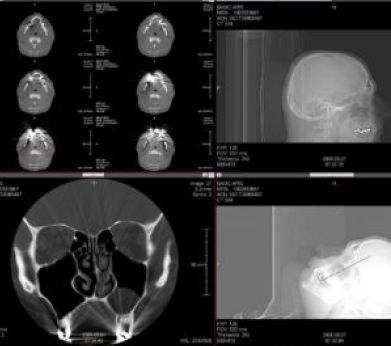Advantages of the PACS Systems

PACS Systems are vital for healthcare organizations which let physicians to easily share medical image reports electronically. These have become standard at most healthcare facilities. Now, why PACS is important for healthcare companies? The digital image of PACS lets you to zoom images and manipulate them for improved viewing and analysis. Moreover, PACS helps in reducing duplicate images, as previous results are available electronically, enhancing the efficiency of data management. In addition, PACS helps patients to get quick access to images and reports. By virtue of PACS, one can perform tests from any place of the globe, sharing the results electronically with remote facilities. Besides, Picture Archiving & Communication Systems let staff in viewing images remotely, submitting reports, archiving images and transporting them through portable media. Furthermore, PACS helps doctors in acquiring chronological view of patient history, facilitating comparison with earlier studies.
Let’s check out a few advantages of the PACS system:
- Several Add-ons Facilitate Accessibility to Staff – PACS comes with several add-ons available for making it accessible to staff. Moreover, this is helpful to patients. The neutral records help to organize stored imaging data in better way, with a centralized and easy to get to system which can be linked with database, image generating device, operating system and infrastructure. The practitioners can get peer review for a flawless and competent re-evaluation of cases within a daily work process.
- Proper Management of Images for Practitioners – With PACS, you can get economical storage. You can retrieve images any time you like and can manage images properly. This helps you to distribute and present medical images as per your requirement. Electronic x-ray reports can be transmitted digitally through PACS. This helps in removing the need for filing, retrieving and shipping films by hand and facilitates the healthcare companies like hospital to store, capture, view and share every kind of images internally and externally.
- Universal format for storage and transfer – PACS has got the universal format for image storage and transfer. Digital Imaging & Communication in Medicine (DICOM) allows Radiology Information Systems (RIS) and several other imaging systems to connect and pass data to other healthcare providers. The PACS is known to deal with a wide array of imaging instruments such as magnetic resonance, ultrasound, nuclear imaging, computed tomography, endoscopy, mammograms, computed radiography, ophthalmology and more. Additional image formats can also be added. Medical areas outside radiology like oncology, cardiology, orthopaedics as well as the laboratory create medical images that one can incorporate into PACS.
- Consisting of four major components –You will get four major components in PACS that include the imaging modalities, secured network for transmitting the patient information, workstations for image interpretation and review and archives for storing and recovery of image reports. Combining accessible & promising web technology, PACS provides in-time delivery and competent image accessibility, understanding and associated data. It demolishes the physical as well as the time barriers pertaining to conventional film-based image recovery, delivery and demonstration.
- Replacement for hard copy –By virtue of PACS, you don’t have to carry any hard-copy of images and manage images in film archives. With the fall in the cost of digital storage, PACS gives you space advantage over film achieves. Besides, getting the privilege of instant access to images at the same institution, you can refer digital copies as soft-copy to patients.
- Remote Accessibility: PACS enhances the probability of conventional systems by offering off-site viewing as well as reporting. This caters distance education and tele-diagnosis. Moreover, this helps practitioners located in different physical locations for accessing the same information at the same time for teleradiology.
- Integration of Images – All electronic images are integrated through PACS system, facilitating interfacing with other medical automation systems like Hospital Information System, Electronic Medical Record, Radiology Information System, Practice Management Software and more. You can manage the flow of work for patient examination by managing radiology workflow.
PACS system is valuable to diagnostician, referring physician, patient and hospital. The diagnostician gets benefitted by getting improved access to current and past records, integrating file and quick retrieval. As a result of which he can do better diagnosis. As a referring physician, one can manage patient better through early intervention, providing better patient outcome. Consequently, this reduces the legal cost pertaining to loss of films and maladministration. The patient is benefitted by getting reduced radiation and exposure from x-ray equipment and less examination time. The patients don’t have to face the inconvenience of attending hospital for re-examinations. Furthermore, the hospitals are benefitted through better communication with physicians and improved hospital administration. Opt for PACS Systems and get greater staff retention because of enhanced self-confidence.





